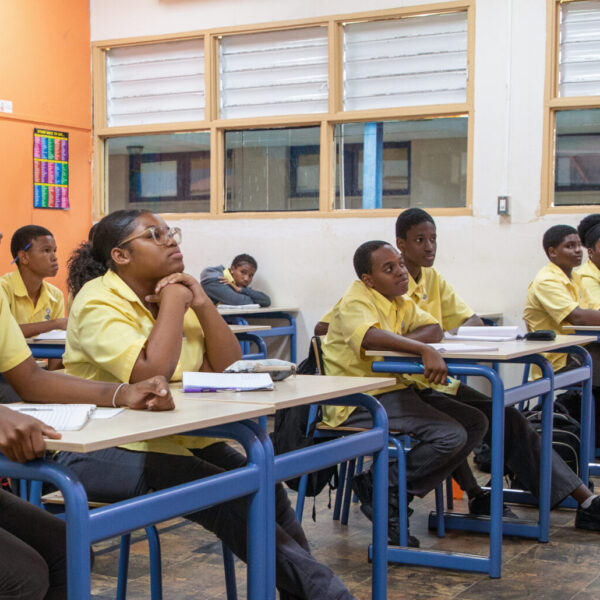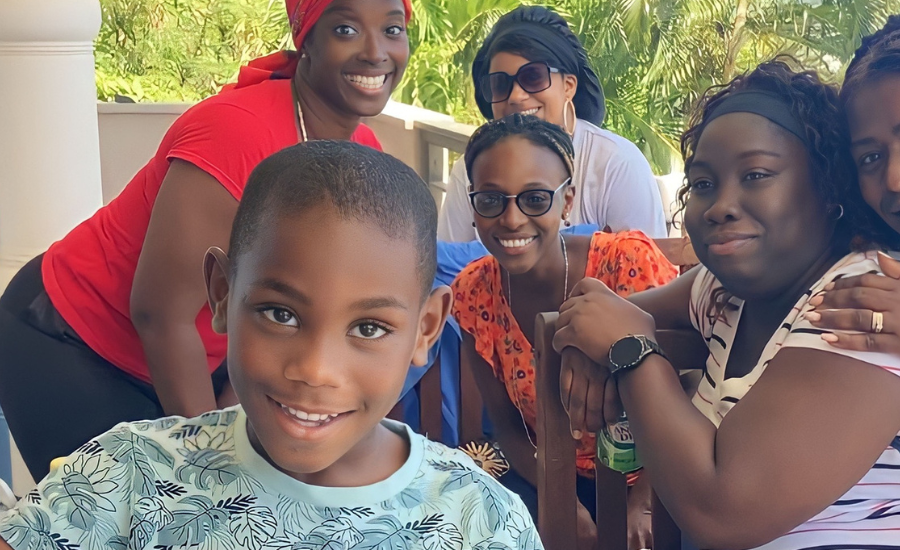This article was written by Edith Geurts, Augeo Foundation
As a teacher, community worker or childcare worker you may suspect that a child is having difficulties at home. For instance, you may see signs that give you an uneasy feeling that something is not right, or a child may confide in you about their experiences at home. Here are eight tips to help you get a clearer picture through a conversation.
1. Be genuine
Children are masters at sensing if you mean what you say or do. This is particularly true of children who are forced to keep their guard up at home; these children have a built-in radar for detecting when someone is putting up a facade.
Don’t suppress feelings: Being genuine means being yourself in relation to the child. Don’t pretend to be something you are not. This doesn’t mean showing every emotion you feel in relation to the child’s story. What it does mean is that you remain aware of your emotions, rather than ignoring or suppressing them. If you are shocked by something the child says, it is better to say you are shocked than hide your emotion at all costs. It is important that you then refocus your attention on the child. This is, after all, not about your own feelings.
Be respectful: A conversation with your pupil shouldn’t be drawn out, even if the child doesn’t want to talk. You cannot compel a child to confide in you. However difficult it may be, an adult should always be respectful and accept a child’s right to self-determination and a simple ‘no’ from a child.
2. Make a connection with the child
A professional attitude requires a genuine interest. You must create a feeling of safety and have the ability to be a good ‘receiver’. In other words, you must notice the child’s feelings and relate to them. It also means that you are aware of the various stages of child development and can make the link to them. Making a connection with a child means giving a child the space to tell their story. If you adopt an unassuming manner, a child will feel more comfortable talking to you.
Development phases of children: Be aware of the different development stages of children. It’s better to talk to a pre-schooler whilst playing. Children are less focused on language than adults, they communicate instead with their whole being. Be aware of this.
These tips are good general guidelines:
– Get involved in the activity the child is busy with in that moment: engage in play, drawing or arts and crafts
– Sit at a child’s eye level and choose a quiet moment
– Stop the conversation as soon as you lose the child’s attention
– Be engaged and involved but don’t fill in for the child; let the child tell their story
– Follow the child’s tempo, you can have more than one conversation
– Pay attention to the child’s non-verbal signs. Do they continually look away or are they interacting well with you? Are they wriggling on their chair or are they relaxed? Do they raise their voice at certain times, or whisper?
– Don’t touch a child unnecessarily or unexpectedly. For an abused child this can feel threatening.
3. Listen actively
Active listening means continually considering what the child actually wants to say. Therefore, listen to the child’s verbal as well as non-verbal messages. Above all, read ‘between the lines’. Specifically, you can interpret a lot from intonation, hesitations and silences.
Through active listening, a child’s situation may become clear, and you get a better understanding of the child’s emotions. Try to summarize the child’s feelings in your own words. You don’t just get more information this way, but the child also feels that they are being taken seriously. More importantly, you are able to check that you have understood the child and interpreted their feelings correctly. Active listening is carried out by asking questions such as, “You mean that; you’re trying to make it clear that; you feel….; Is that correct; you’d prefer that….?”
4. Accept what the child says
Acceptance means accepting the child as they are. That is not to say that you have to agree with the child’s thinking or emotions. Acceptance is listening without judging. Fantasy and fact are often interchangeable for children. For a child their story is logical because they know where fantasy begins, and they assume you do too. This is why it’s important not to bring the credibility of the child into question. For one thing, it’s not your role to determine if the child is telling the truth. Take whatever your pupil tells you seriously. In addition, children sometimes need an alternative version to be able to tell their own story.
Metaphors: Young children, in particular, are prone to speak in metaphors, even though they are clearly talking about their own situation. They speak, for example, about mean dragons and poor princesses or whatever fits with their experiences at the time. If you express a lack of understanding, they won’t feel they want to tell you more. Acceptance means moving at the child’s own pace. If a child doesn’t want to tell you anything, then that is fine as well.
5. Don’t side against the parents
Children are loyal to their parents; that also applies for abused children. That’s why it is important not to criticize the parents or speak negativity in other ways about them. The child may denounce their parents, but you may not. Doing so intensifies the loyalty conflict that a child already faces, and the child may be inclined to protect their parents.
Stay positive: Realize that when a child speaks of their ‘nasty’ or ‘angry’ papa or mama, it doesn’t mean the child no longer wants to live at home. The pupil is saying that they hate the behaviour of their father or mother and want it to stop. Respect that a child is loyal to their parent. You can do this by asking to hear the positive things about the parents.
6. Ask short open questions
Ask short questions. Start with open questions. What happened? When did it happen? How did it happen? Interchange open with closed questions. Did you fall? Are you hurt? Did you cry? Did you like that or not? Be wary of posing too many questions directly after each other, a child can quickly feel like they are being interrogated.
Don’t ask ‘why’ questions. A child doesn’t know why something happened, or why someone does something. Above all such questions can evoke feelings of guilt, and that is exactly what you don’t want. A child often already feels guilty and ashamed. ‘Why’ questions can cause resistance, whereas you actually want to create a feeling of safety.
Don’t continue questioning if a child doesn’t want to or can’t tell you something. The child is not a ‘truth seeker’, just someone who wants to tell their story. The child has concerns, such as, am I safe telling my story to you? Will you still like me? Are you going to do something without me knowing?
Pay attention to the child’s non-verbal signals. Their demeanour, body language and the way they make (or avoid) contact with you can be revealing. All these signs can confirm or contradict the story the child is telling. You can also ask the child to make a drawing about what they are telling you.
If a child is struggling while talking to you, try posing questions using the third person, for example, “some children say…”. By doing so, you let the child know they are not the only one and you know what you are talking about.
Often children are apprehensive about telling the whole story right away. They also tend to play down their story. It may therefore be necessary to have multiple discussions in order to substantiate your concerns. In a first discussion, praise the child for sharing a part of themselves with you. Emphasize this point clearly for the pupil. Compliment the child for confiding in you. The child has overcome a significant hurdle by talking about their home situation.
Confirm that you have understood what has been said by summarizing at regular intervals and asking for confirmation: ‘You say that… Is that correct?’, ‘Have I understood correctly that you are saying that…?’, ‘Do you mean that you…?’
7. Give explanations
Adults are inclined to think that children know the rules of communication. This is often not the case. Make the purpose of your discussion known right from the start.
Follow these tips to guide you:
-Tell the child that you would like to talk to them about something he or she has told you, or about something you have seen.
-Tell the child why you want to talk and what you will do with anything they tell you. Say, for example, that you are concerned and want to determine if you can help them or their parents.
-It’s also good to indicate that the talk is about the child’s version of events. Let the child know that you are interested in their opinion and feelings and that there are no right or wrong answers. All answers are good.
-During the discussion do not promise that the child and their family will be helped immediately. That’s not something you can guarantee. It often takes time to initiate help. At the end of the day, a month feels like an eternity to a child.
-Close the discussion with a summary of what you have talked about. And share what your plan going forward is.
-Discuss with the child what they should do if things aren’t going well at home. Offer suggestions such as going to a neighbour, if they feel unsafe, or calling the police. You can also let the child know that they can come to you if they are feeling sad, or alternatively, call a trusted relative. Let the child think for themselves what they could do, or who they could call.
8. Never promise secrecy
Never promise secrecy to a child. If a pupil asks you not to share their story with anyone else, make it clear that you cannot promise that. Explain that you need to involve other people to get help.
Don’t act without telling the child: You could say, ‘If I keep what you tell me secret, then we share that secret, and I can’t get help for you. I need others to be able to help you, but I promise I won’t do anything without first telling you. I will always tell you what I am going to do. Ok?’. Children understand if you say, ‘If I don’t know what to do, is it okay if I talk to someone else who knows lots about children?’
More information: Augeo Kind centraal (https://www.augeo.nl/kindcentraal)




